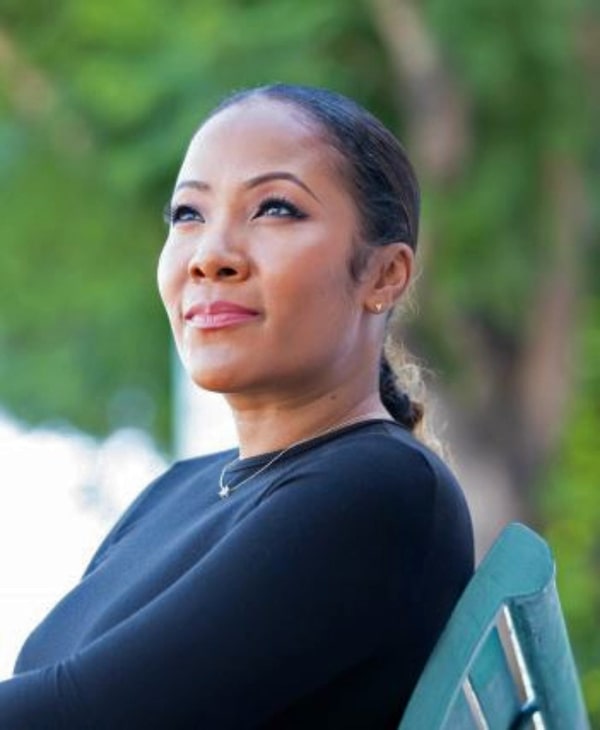
ARRAY President Tilane Jones.Robert Houser
Earlier this month, Canada’s Black Screen Office released a blistering report entitled Being Seen: Directives for Creating Authentic and Inclusive Content. The 51-page study, which revealed how the country’s film, television and digital-media sectors are “falling short in representing people from Black, People of Colour, 2SLGBTQIA+ and People with Disabilities communities,” urged greater onscreen representation that doesn’t resort to tokenism and stereotypes.
While the report focused on the creative and financial elements that shape productions – broadcasters and production companies, writers and directors – the Black Screen Office noted that a true shift in the landscape requires structural change “throughout the system.”
In other words, diverse stories require diverse creators, from those at the top of a crew to what are called “below-the-line” participants: editors, art directors, line producers, hair and makeup stylists, production assistants and more. Which is where a handful of new Canadian initiatives come into play.
This week, ARRAY Alliance, the “narrative change non-profit” organization founded by American filmmaker Ava DuVernay (Selma, When They See Us), launches its Canadian expansion of ARRAY Crew. The initiative, a sort of Internet Movie Database meets LinkedIn, offers producers access to thousands of profiles of diverse below-the-line talent across more than 600 job titles, with a “special focus on the amplification of women, people of colour, and other under-represented film and television professionals.”
With financial support from most major Hollywood studios and streaming services, ARRAY Crew allows any entertainment-industry professional over the age of 18, with a minimum of one verifiable production credit, free access to create a for-hire profile. The service, which was launched in the U.S. a year ago and now boasts more than 8,000 members, offers one-stop shopping for crew members looking to expand their networks and producers looking to build diverse crews to make diverse content.
“From the very beginning our partners have been asking for Canadian crew, given that a lot of shows and movies film in major Canadian markets, so we’ve been working toward that since launch,” said Tilane Jones, president of ARRAY, in an interview. “The studios are invested in this financially, in keeping this operational – they really want to have more diverse crews.”
ARRAY Crew joins an increasingly crowded field of similar Canadian services, though. In October, 2020, the web portal HireBIPOC, designed to develop a more inclusive film and TV production work force, launched with support from more than 20 major Canadian media organizations including Bell Media, CBC/Radio-Canada, Corus Entertainment and Rogers Sports & Media. And that initiative was preceded by the searchable databases Access Reelworld (launched in June, 2020) and Film in Colour (January, 2020).
“I feel like we’re complementing the landscape – we’ve definitely reached out to those organizations in partnership. We just want to add to the work that they’re doing,” says Jones. “Our goal is to help increase access.”
Kadon Douglas, executive director of BIPOC TV & Film, which administers HireBIPOC, also views ARRAY Crew’s entry into the Canadian market as a step toward her organization’s end goal.
“We want to increase opportunities for creative BIPOCs, and whether that comes from us or any other database, what matters is that these people are being hired and our workspaces are being transformed,” says Douglas, who notes that HireBIPOC is close to hitting 8,000 members. “The difference, too, with ARRAY Crew is that it’s not only for BIPOC professionals but focused on women, persons with disability, members of the LGTBQ community, too, and we know that nonbinary and trans people working in the sector is low. If ARRAY becomes the platform where they can be discovered, that’s something I embrace.”
Pranay Nichani, a Toronto-based video editor, knows the benefits of such diversity-focused initiatives firsthand. After emigrating from Mumbai six years ago, Nichani found it challenging to rebuild his professional network from scratch.
“In this industry, it really is all about who you know, but using HireBIPOC, I’ve gotten work and also made friends,” says Nichani, who adds that he’s secured five jobs through the service. “There is a core group of people connected through it, and we now reach out to each other about work and ask technical questions. It’s a place of community.”
Ultimately, though, Jones hopes that ARRAY Crew and its ilk will become unnecessary. “Ten years in the future, hopefully we’ll be talking about how we’ve reached our goal that crews are diverse,” she says.
What will also ideally shift, says HireBIPOC’s Douglas, is the industry’s top-to-bottom approach to storytelling.
“We want people to take the time to examine biases: look around your team, ask who is missing from it and apply a critical lens to that,” she says. “The work we’re doing now is being actively anti-racist. If you are truly committed to that, we will see the difference on our screens.”
Plan your screen time with the weekly What to Watch newsletter. Sign up today.
 Barry Hertz
Barry Hertz